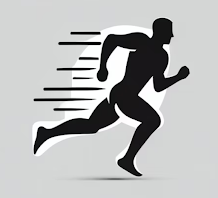Last week we experienced something extraordinary. It was a special day for the computer industry and for all of us who need computers for everyday life. According to IBM CEO Dr. Arvind Krishna, traditional computing has come to an end.
In Germany, one of the most powerful quantum computers in an industrial context was presented in the presence of Chancellor Angela Merkel, who also gave a guest lecture. Under the motto “Together for Quantum Computing in Germany”, IBM presented the system in detail in a compact virtual live event. I was also allowed to take part in this piece of computer history. It was a very exciting, informative presentation.
Quantum Computing makes use of quantum physics in order to be able to perform complex calculations in the shortest possible time. The system is divided into arithmetic and storage units and works differently than binary systems with qubits, which can assume more states than bits at the same time. Take qubits an intermediate state at - zero and one at the same time - they are in the so-called superposition. This possibility allows quantum computers to assume a multitude of states compared to binary systems. As a result, they can perform calculations in a fraction of the time that supercomputers would need , - after all, they need fewer resources to process large amounts of information.
The full Quantum Stack from IBM enables partners to develop their next solutions with unmatched levels of accuracy and scale. Companies, institutes, research institutions and start-ups from Germany and around the world work together with the IBM Quantum Network. More than 100 members of the Quantum network community - including Daimler and the Fraunhofer-Gesellschaft - access our quantum systems and can use them to tackle challenging problems in fields such as financial services, material development, logistics and chemistry in a previously unimagined way.
From now on, we can we create programs that solve problems in new ways on IBM Quantum systems - the world's most popular and most powerful commercially available quantum hardware. Quantum development has never been more accessible.
This enables Quantum to be integrated into your workflow with high-level libraries designed for academic and business applications. Calling an API is enough to get a quantum result on your classic machine via the cloud - it just works behind the scenes.
At the same time, IBM offers courses to train as a Qiskit developer. They can then demonstrate basic knowledge of quantum computing concepts and express this using Qiskit's Open Source Software Development Kit (SDK). You can use the Python programming language Qiskit SDK to create and run quantum computer programs on IBM Quantum computers and simulators.
Their key areas of competency are:
Defining, executing, and visualizing results of quantum circuits using the Qiskit SDK.
Understanding single-qubit gates and their rotations on the Bloch sphere.
Understanding various multi-qubit gates and their effects in quantum circuits.
Leveraging fundamental Qiskit SDK features including commonly-used classes and functions located in qiskit.circuit, qiskit.execute, qiskit.providers, qiskit.qasm, qiskit.quantum_info, qiskit.tools, and qiskit.visualization packages.
During exam development, the Subject Matter Experts (SMEs) define all of the tasks, knowledge and experience that an individual would need in order to successfully fulfill their role with the product or solution. These are represented by the objectives below and the questions on the certification exam are based upon these objective.
javabridge. CPython, that can be used to execute Python code. The class can be used within Java code called from the Python interpreter or it can be used within Java to run Python embedded in Java. The CPython class binds the Python interpreter to the JVM and provides the ability to execute Python scripts.
Companies getting involved with quantum now are trailblazing ways to apply the technology to problems once thought impossible to solve.
IBM's Quantum Network is currently working with over 140 partners across multiple industries, developing real world commercial applications.
For companies like us, QUantum Computer is a huge help in mastering large amounts of data. System integration and transformation always has to do with billions of system objects and may take days. From now on this time span will be much shorter and our ability to use computers to create new software will be much more effective. 🐝









